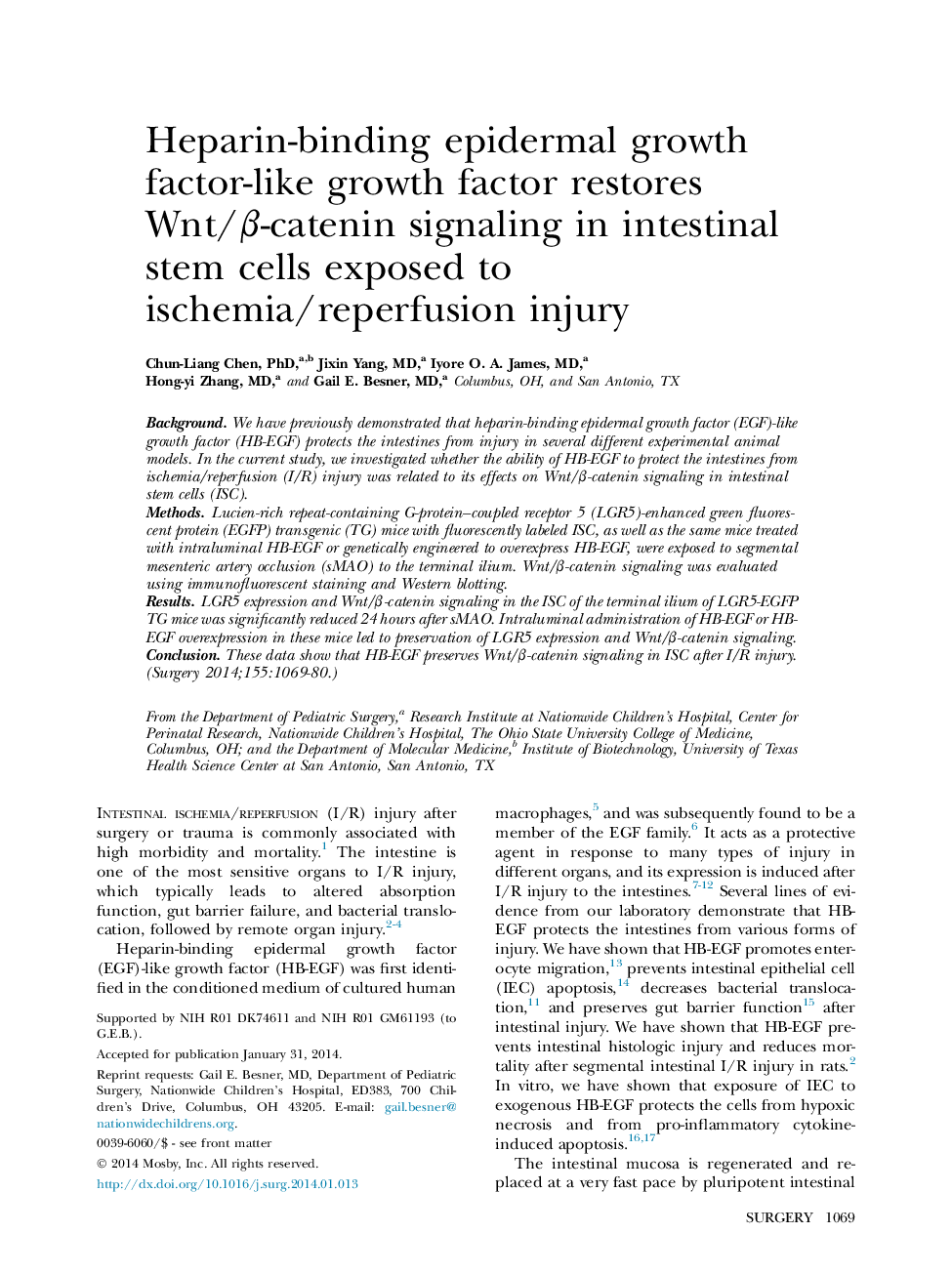| Article ID | Journal | Published Year | Pages | File Type |
|---|---|---|---|---|
| 4308066 | Surgery | 2014 | 12 Pages |
BackgroundWe have previously demonstrated that heparin-binding epidermal growth factor (EGF)-like growth factor (HB-EGF) protects the intestines from injury in several different experimental animal models. In the current study, we investigated whether the ability of HB-EGF to protect the intestines from ischemia/reperfusion (I/R) injury was related to its effects on Wnt/β-catenin signaling in intestinal stem cells (ISC).MethodsLucien-rich repeat-containing G-protein–coupled receptor 5 (LGR5)-enhanced green fluorescent protein (EGFP) transgenic (TG) mice with fluorescently labeled ISC, as well as the same mice treated with intraluminal HB-EGF or genetically engineered to overexpress HB-EGF, were exposed to segmental mesenteric artery occlusion (sMAO) to the terminal ilium. Wnt/β-catenin signaling was evaluated using immunofluorescent staining and Western blotting.ResultsLGR5 expression and Wnt/β-catenin signaling in the ISC of the terminal ilium of LGR5-EGFP TG mice was significantly reduced 24 hours after sMAO. Intraluminal administration of HB-EGF or HB-EGF overexpression in these mice led to preservation of LGR5 expression and Wnt/β-catenin signaling.ConclusionThese data show that HB-EGF preserves Wnt/β-catenin signaling in ISC after I/R injury.
